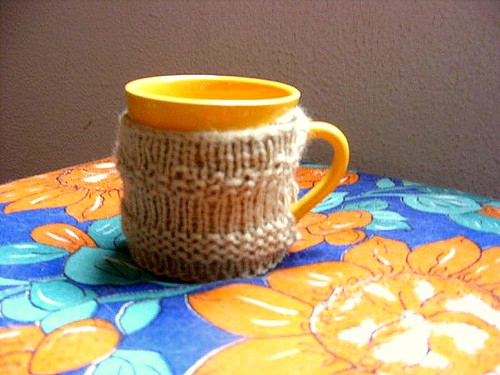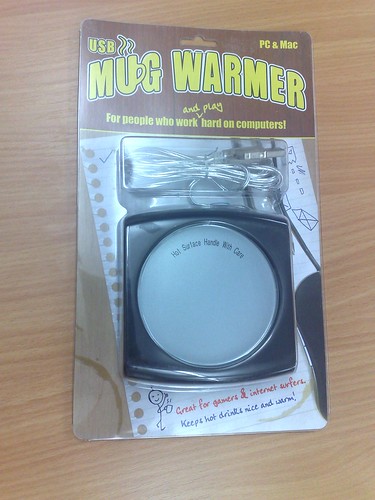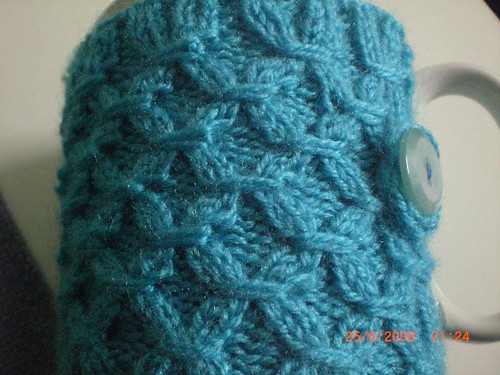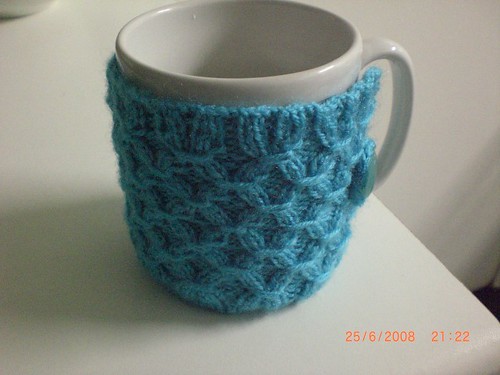
Image : http://www.flickr.com
Please make the children's table festive!
I watched a little muchkin's face fall last holiday when she realized she was relegated to the "children's table." I make it the focal point of my own decorating, and suggest you do the same.
Here are some festive drink recipes for the little elves in your life. Choose festive ware and garnish. Any drink with whipped cream, you can put sprinkles atop, candied fruit, cinnamon candies, christmas "picks," drizzle with (non-alcoholic) crème de menthe for color, shaved colored chocolate, a Candy. kiss. Tie a red bow with an evergreen sprig on the punch ladle; surround the base with greens and sugared cranberries or toy ornaments.
If it's hot, stick in a cinnamon stick or candy cane; dollop with whipped cream and garnish with sprinkles, cinnamon candies, confectioner's sugar; add a holiday "pick"; stick a sparkler in each mug and light at presentation time.
If it's cold, use decorated ice cubes - freeze cranberries, tiny ornaments, mint leaves, anything festive and NON-POISONOUS into the cubes and add at presentation time. (Remember that holly berries and all parts of the mistletoe are poisonous); or freeze the same things in an ice mold. You can have great fun with floating ice rings for punch for the kids - put in ornaments, cherries, greenery, anything you can make hygienic-enough and that isn't poisonous!
Whatever you serve, serve it with festive flare, and give it a holiday name!
1. Nana's Nog
3 cups milk
1 cup half 'n' half
3 T. sugar
Put in blender with ice and frappe. Consider food coloring and candy sprinkles. Serves 4.
2. christmas Mint Punch
1 1/2 c water
10 oz mint jelly
3 c pineapple juice, chilled
1/2 c lemon juice
64 oz Sprite
1 qt lime sherbet
In small saucepan, combine water and mint jelly; cook and stir until jelly melts. Cool. In large punch bowl, combine jelly mix and juices. Just before serving, add Sprite and lime sherbet.
3. Trim-the-Tree Cider Punch
1 gallon apple cider
12 whole cloves
2 large apples (Granny Smith, Rome Beauty), peeled, left whole
2 cinnamon sticks
Ground nutmeg
Pour apple cider into large pot. Insert 6 cloves into each apple. Add apples and cinnamon sticks to pot. Bring to boil. Reduce heat; cover and barely simmer over very low heat 1 hour to allow flavors to blend. (Can be prepared 1 day ahead. Cover and refrigerate. Rewarm over low heat before continuing.) Ladle hot cider punch into mugs. Sprinkle with nutmeg and serve.
Source, Bon Appétit, December 1995
4. Snow Man Punch
Stir up a pint of ice cream - vanilla, peppermint, mint, adding a little milk to thin it. Scoop it into snowcone cups or other festive ware. Disposable plastic Christmas ware is great for little elves!
Variation: Add green creme de menthe flavoring, non-alcoholic.
5. Spicy Cranberry Punch
1/2 cup red cinnamon candies
4 C. water
8 C. cranberry juice cocktail, chilled
6 oz. can frozen limeade concentrate
6 oz. can frozen orange juice concentrate
In small pan, melt candies in water; chill. At serving time, combine candy liquid and fruit juices in punch bowl. Stir to dissolve. Makes 18, 5-oz. cups.
6. Wassail Bowl
Whole cloves
1 large orange
2 qts. apple juice or cider
3 T. lemon juice
4 cinnamon sticks
Heat oven to 350. Insert cloves into orange. Place in shallow baking pan and bake at 350 for 30 mins. Pierce orange in several places with tines for a fork.
In large saucepan, combine apple and lemon juice, cinnamon sticks and baked orange. Cover; simmer over low heat 30 mins. Remove sticks and orange. Pour into heatproof punch bowl. If desired, float the orange in the bowl. Serve [safely] hot. Makes 16, 4 oz. servings.
7. Children's Cranberry "Champagne"
Combine 2 well-chilled 750-ml. bottles non-alcoholic sparkling cider with 1 cup cranberry juice cocktail or to taste.
8. Elf Warmer
1 qt. vanilla ice cream
3 sticks margarine
1 box brown sugar
nutmeg, cinnamon, allspice
Combine and keep in freezer. At serving time, put 1 heaping T. scoop into a mug, add hot water (to taste) and heat.
9. Santa Red Punch
4 cups water
3 cups sugar
2 small packages of red Jello
l large can pineapple juice
1 bottle of almond extract
Serves 25-30.
10. Evergreen Punch
2 pkgs. unsweetened lemon-lime Koolaid
2 cups sugar
2 qts. water
1, 46-oz. can pineapple juice
1 quart gingerale
Dissolve sugar and koolaid. Add pineapple juice and chill. Add gingerale at serving time. Good too if you freeze it for a while until it's slushy. Then call it Santa Slush. Serves 36.
Portable Generator




